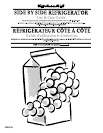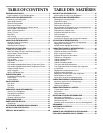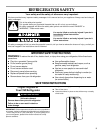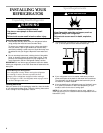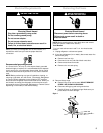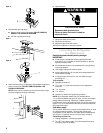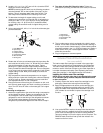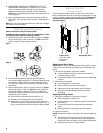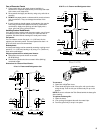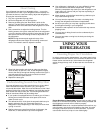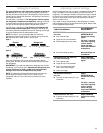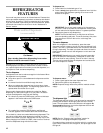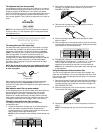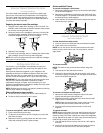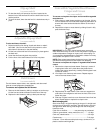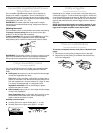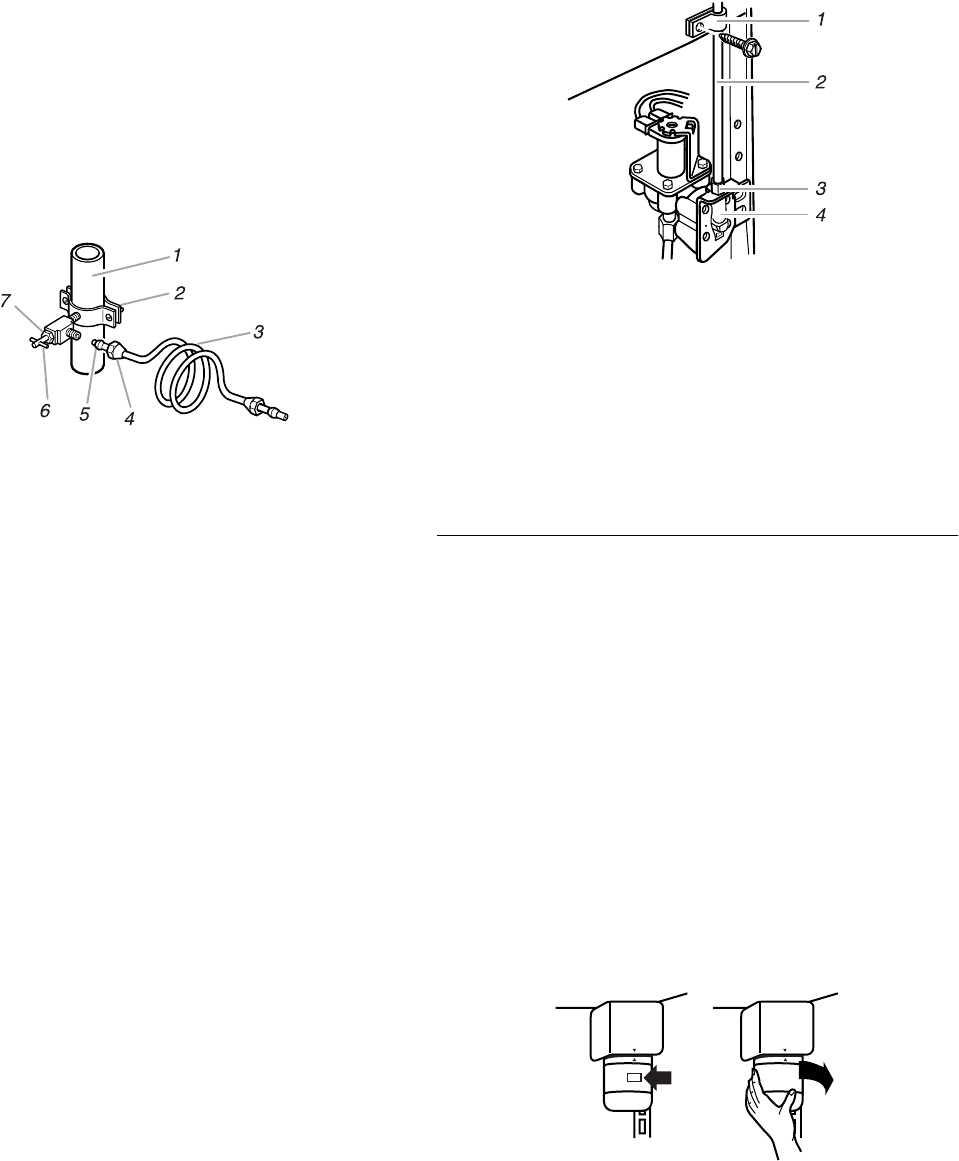
7
3. Locate a ½ in. to 1¹⁄₄ in. (12.7 mm to 3.18 cm) vertical COLD
water pipe near the refrigerator.
NOTE: Horizontal pipe will work, but the following procedure
must be followed: Drill on the top side of the pipe, not the
bottom. This will help keep water away from the drill. This
also keeps normal sediment from collecting in the valve.
4. To determine the length of copper tubing you will need,
measure from connection on lower left rear of refrigerator to
water pipe. Add 7 ft. (2.1 m) to allow for moving refrigerator
for cleaning. Use ¹⁄₄ in. (6.35 mm) O.D. (outside diameter)
copper tubing. Be sure both ends of copper tubing are cut
square.
5. Using a grounded drill, drill a ¹⁄₄ in. hole in the cold water pipe
you have selected.
1. Cold Water Pipe
2. Pipe Clamp
3. Copper Tubing
4. Compression Nut
5. Compression Sleeve
6. Shut-Off Valve
7. Packing Nut
6. Fasten shut-off valve to cold water pipe with pipe clamp. Be
sure outlet end is solidly in the ¹⁄₄ in. drilled hole in the water
pipe and that washer is under the pipe clamp. Tighten
packing nut. Tighten the pipe clamp screws carefully and
evenly so washer makes a watertight seal. Do not overtighten
or you may crush the copper tubing, especially if soft (coiled)
copper tubing is used. Now you are ready to connect the
copper tubing.
7. Slip compression sleeve and compression nut on copper
tubing as shown. Insert end of tubing into outlet end squarely
as far as it will go. Screw compression nut onto outlet end
with adjustable wrench. Do not overtighten.
8. Place the free end of the tubing into a container or sink, and
turn ON main water supply and flush out tubing until water is
clear. Turn OFF shut-off valve on the water pipe. Coil copper
tubing.
Connecting to refrigerator:
1. Attach the copper tube to the valve inlet using a compression
nut and sleeve as shown. Tighten the compression nut. Do
not overtighten. Use the tube clamp on the back of the
refrigerator to secure the tubing to the refrigerator as shown.
This will help prevent damage to the tubing when the
refrigerator is pushed back against the wall. Move to step 2.
2. Turn shut-off valve ON. Check for leaks. Tighten any
connections (including connections at the valve) or nuts that
leak.
1. Tube Clamp
2. Copper Tubing
3. Compression Nut
4. Valve Inlet
3. The ice maker water valve is equipped with a built-in water
strainer. If local water conditions require periodic cleaning or
a well is your source of water supply, a second water strainer
should be installed in the ¹⁄₄ in. (6.35 mm) water line. Obtain a
water strainer from your nearest appliance dealer. Install at
either tube connection.
4. Plug in refrigerator or reconnect power.
Interior Water Filter Installation
(on some models)
The interior water filter cartridge is located in the upper right-
hand corner of the fresh food compartment of the refrigerator.
The interior water filter cartridge should be replaced every six
months or earlier if the flow of water to your water dispenser or
ice maker decreases noticeably. (See “Replacing the interior
water filter cartridge” in the features section of this book.)
Installing the interior water filter cartridge
NOTE: Do not use with water that is microbiologically unsafe
or of unknown quality without adequate disinfection before
or after the system.
1. Carefully remove the interior water filter cartridge from its
packaging. Remove the red cap from the cartridge.
2. Apply the appropriate month sticker to the cartridge as a
reminder to replace the cartridge within six months. Then
apply the “Water Filter Replacement Reminder” sticker to
your calendar as a reminder to replace the cartridge in six
months.
3. Line up the INSTALL mark on the water filter label with the
indicator line that is molded into the filter mounting bracket
cover. Push the cartridge into the filter mounting bracket.
Twist the cartridge ¹⁄₄ turn to the right to lock it into place. The
REMOVE mark should be lined-up with the indicator line
located on the front cover.



